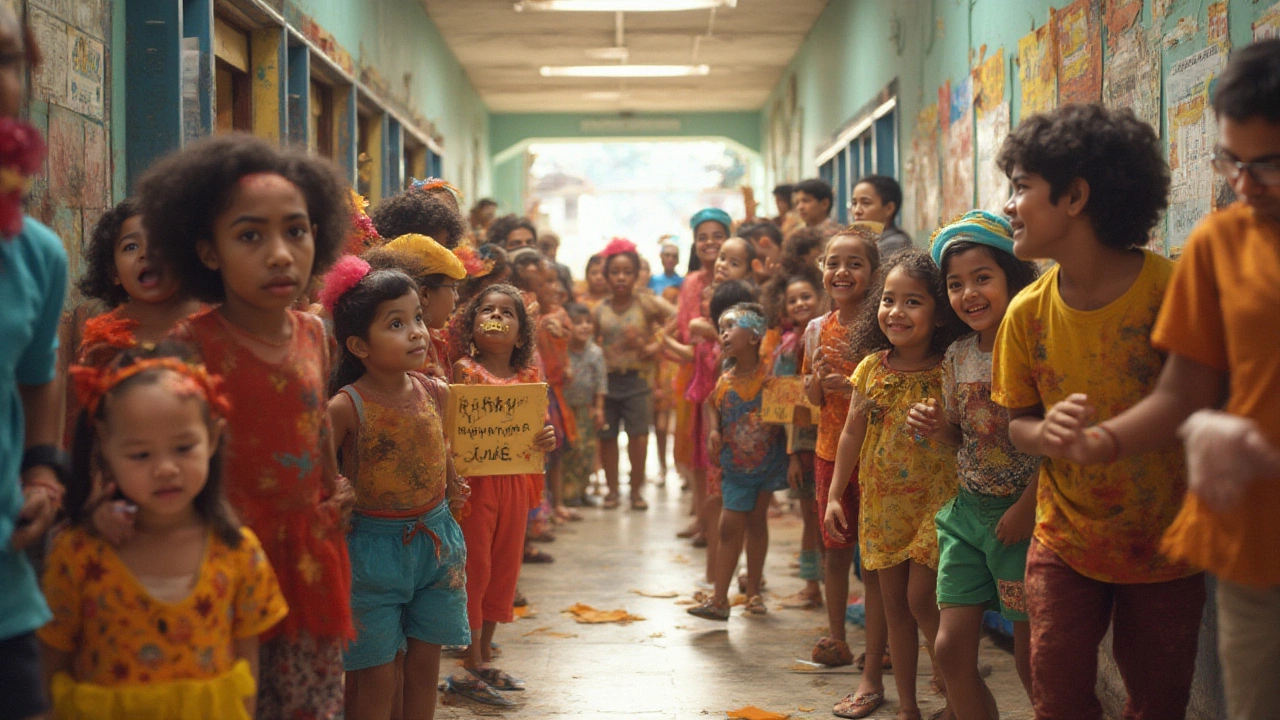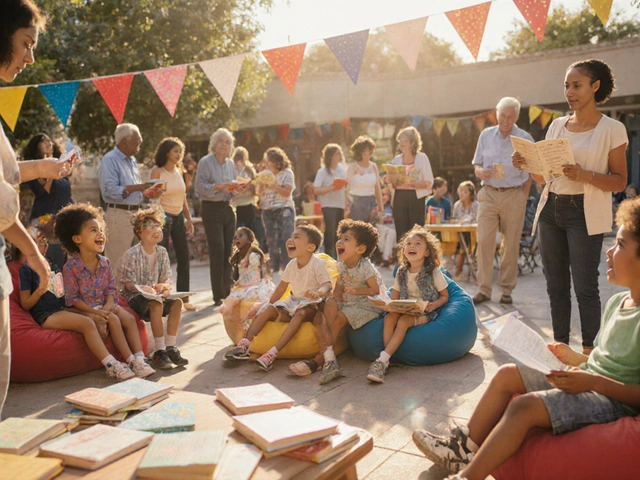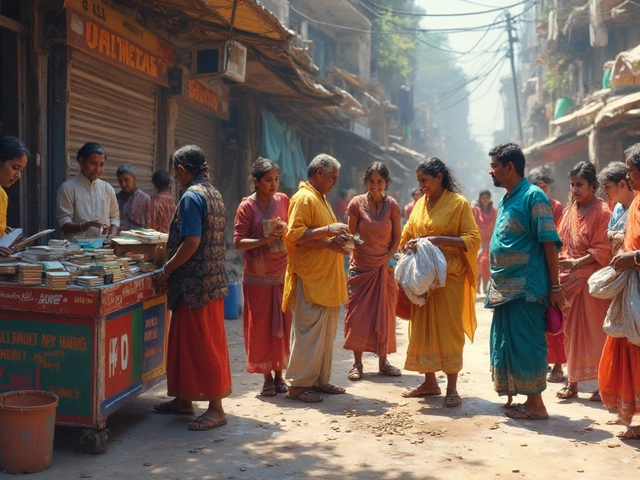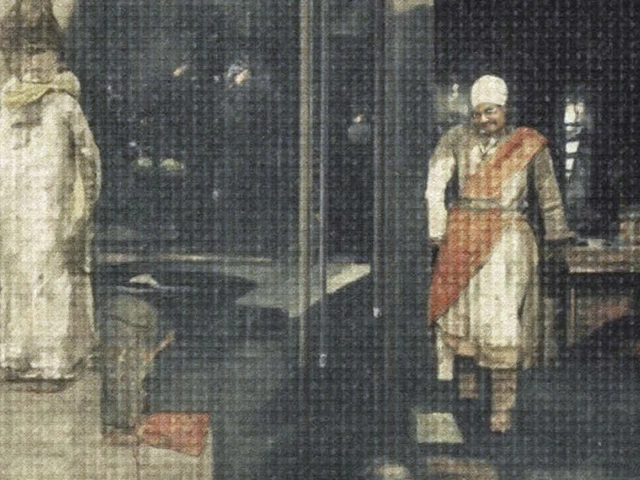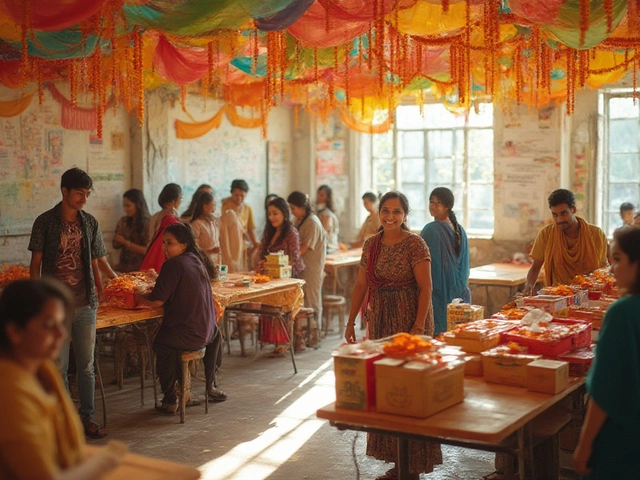Have you ever walked into a school and seen a teacher with their shirt on backward, students wearing mismatched shoes, and the principal with wild-colored hair? That’s not a normal Wednesday. That’s Wacky Wednesday, the most unpredictable day on the school calendar. You’ll spot rubber chickens taped to walls, clocks hung upside down, and maybe even a class spelling 'banana' backwards on the board. This isn’t your usual lesson plan, but there’s more to Wacky Wednesday than just silly costumes.
Where Did Wacky Wednesday Come From and Why Do Schools Celebrate It?
Wacky Wednesday has roots that feel like they belong in a storybook—and, in fact, they do. The idea comes straight out of Dr. Seuss’s classic picture book “Wacky Wednesday,” published back in 1974. In that book, the world gets wackier with each turn of the page, and readers are challenged to spot everything out of place. Some clever educators loved the idea and decided: why not recreate it in real life? Cue the first Wacky Wednesday. Since then, the idea has snowballed. Hundreds, if not thousands, of elementary schools—and even a few middle schools—across the United States and other countries have adopted Wacky Wednesday as their unofficial license to get silly.
There’s more going on here than weird socks and backward pants. Schools use theme days like Wacky Wednesday to break up the regular routine and boost student engagement. A study by the National Education Association found that spirit days like this can lead to a 17% increase in student participation, especially in the gloomy months of February and March when focus tends to droop. Kids look forward to it for weeks. Teachers secretly love it too—it’s a chance to connect with students in a way that isn’t strictly about tests or homework. Some teachers say Wacky Wednesday helps shy kids come out of their shells. It makes the school feel less intimidating and a bit more like a community.
If you’re thinking Wacky Wednesday is only about dressing funny, think again. Schools have gotten really creative. You might see reading challenges with upside-down books, crazy writing prompts, or even math riddles where every answer is a joke. This isn’t about goofing off; it’s about inviting kids (and adults) to see learning from a new perspective. It builds confidence because there’s no right or wrong way to be “wacky.” Anyone can join—doesn’t matter if you go all out or just put a sticker on your forehead. Some schools set up competitions for the most creative class theme. Others surprise everyone with wacky lunchroom foods—think rainbow spaghetti or green mashed potatoes just for the day.
Parents get in on the fun too. It’s common to see family emails sent out days ahead with costume suggestions or secret challenges. Some families spend the night before planning their craziest outfit. It turns into a little bit of a friendly neighborhood rivalry, with siblings trying to outdo each other. Even school staff join in, sometimes with a behind-the-scenes vote on which teacher went the wackiest.
If you ask a classroom full of kids why they love Wacky Wednesday, you'll hear everything from “there are no rules” to “my teacher wore their pajamas.” But under the laughter, teachers know that days like these are a great way to build relationships and create memories that last far longer than a single day.
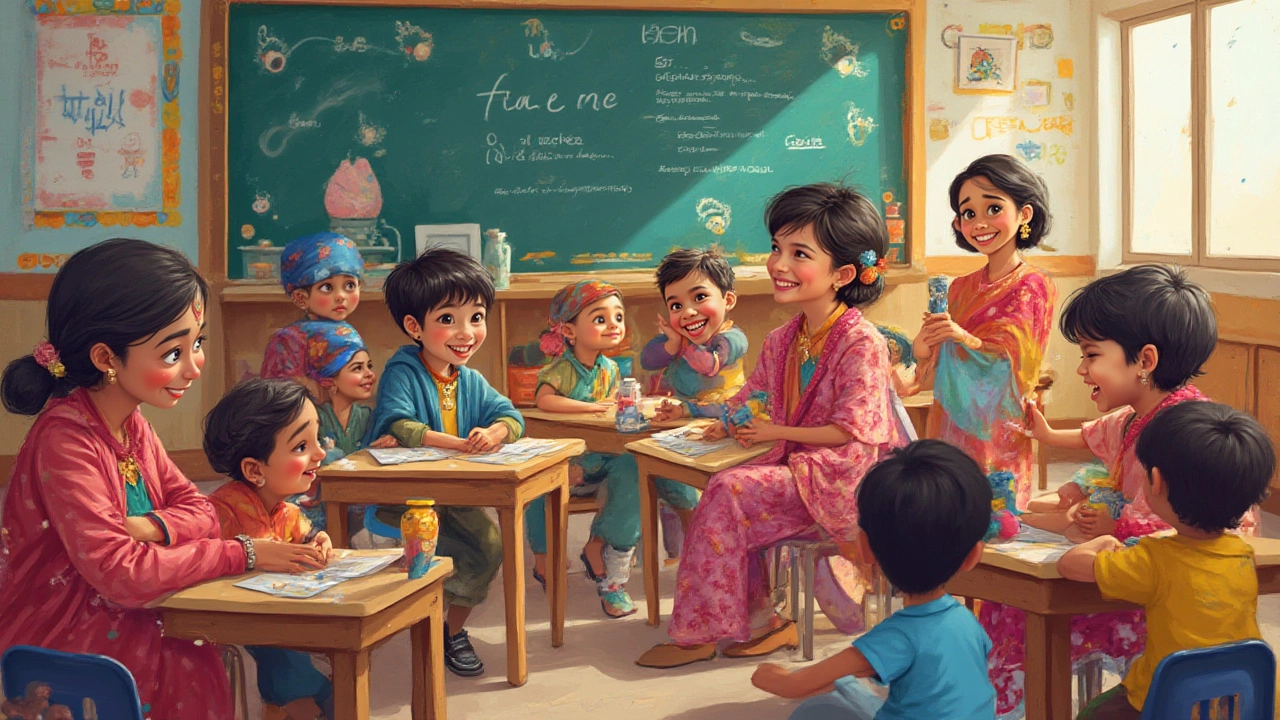
The Wildest Wacky Wednesday Ideas: Making the Day Unforgettable
Wondering how to stand out on Wacky Wednesday? Here’s where creativity goes into overdrive. For students, the go-to is always in the wardrobe. Mismatched shoes, crazy hair, shirts inside out, or even backward—anything that breaks the weekday routine. Some students layer so many clothes they can barely move, or deck themselves out in every color of the rainbow. But there’s more than just personal style at play.
Schools often theme the entire day. Maybe this year the theme is “Backwards Day,” and all classes move in reverse order. First graders go to lunch first thing in the morning, then have math class last. Sometimes the hallway decorations get a makeover, turning familiar spaces totally upside-down. Teachers mark up the whiteboard with wacky spelling errors (which students have to spot and correct), or decorate desks with googly eyes and streamers.
Wacky Wednesday has even become an unofficial contest in some schools. Classes compete to see who can get the most students participating, or who has the best group costume. Teachers often get roped into student-led challenges—like reading poetry in a silly voice or eating a “mystery” lunch concocted by kids (under strict adult oversight, of course!).
Here's a handy list of classic and creative ways schools celebrate:
- Wear mismatched shoes and socks
- Have a "crazy hair" day (think colored hairspray or wild braids)
- Dress totally in one color (head-to-toe neon green, anyone?)
- Teachers swap classrooms for a lesson
- Pick a funky theme—pirates, superheroes, animals
- Turn popular songs into parody versions and perform them at an assembly
- Switch roles—students become "teachers" for a lesson
- Have an "everything backwards" day (start with the pledge at the end of the day!)
- Lunchroom “mystery menu” with surprise foods
The magic ingredient? Really, it’s creativity. The more buy-in from both teachers and students, the more memorable the day. One class even brought an inflatable palm tree and declared the classroom a beach zone for 24 hours—students brought sunglasses, beach towels, and even read books about surfing. The care and participation make Wacky Wednesday go from silly to spectacular.
But it’s not all about fun and games. Educators know that mixing up the routine with something like Wacky Wednesday actually helps kids grow. It boosts creativity, lowers stress, and helps students become more flexible thinkers. There are even schools that tie Wacky Wednesday into social-emotional learning: students spend the day practicing kindness, or complimenting each other’s zaniest outfits to make sure everyone feels—even for a few hours—like they truly belong.
| Wacky Wednesday Ideas | Participation Rate |
|---|---|
| Mismatched Outfits | 91% |
| Crazy Hair Day | 83% |
| Classroom Decor Changes | 70% |
| Lunchroom Fun Foods | 58% |
| Role Reversals | 49% |
If you’re planning a Wacky Wednesday and want to level it up, try setting up a challenge—like a school-wide hunt for hidden “wacky items” or a joke contest. Don’t be afraid to get the principal involved; nothing inspires students like seeing their school leader in a banana suit!
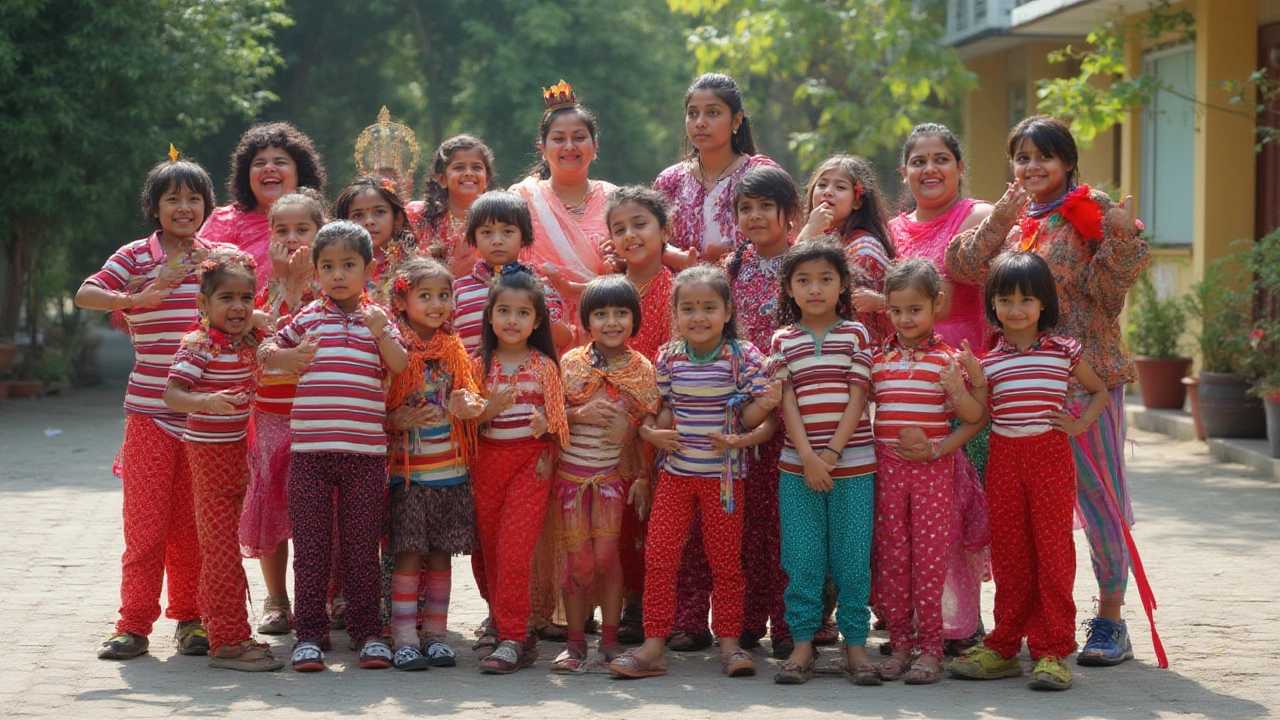
Making the Most of Wacky Wednesday: Tips, Tricks, and Surprising Benefits
If you want your Wacky Wednesday to go off the charts, a few simple tips can make all the difference. First, get everyone excited in advance. Send out reminders, hang posters, maybe even tease a secret “wacky guest” who’ll visit on the big day. One year, a local school had their local news anchor drop by wearing giant clown feet.
Have a plan but stay flexible. Sometimes the best wackiness springs from a spur-of-the-moment idea. Let students help decorate or suggest activities—they’ll have tons of creative ideas. Coordinate with parents so everyone knows what’s allowed (and what’s too wild—nobody needs glitter bomb explosions in the library!).
Here are some practical tips for teachers and parents:
- Pick a theme in advance—this helps kids plan costumes and activities.
- Display a wacky countdown calendar in the hallway to build excitement.
- Offer simple ways students can participate, even if they don’t like dressing up (like making funny nametags or decorating folders/stationery).
- Keep an eye out for inclusion—make sure everyone feels welcome. If a student doesn’t want to be “wacky,” offer alternate ways to join in the fun.
- Get “guest wackies,” like parents or community members, to drop in unexpectedly.
- Give awards (stickers, certificates) for super participation—not just “best costume.”
On top of all the excitement, there are some sneaky benefits to Wacky Wednesday. It’s a mini-distress button for busy school weeks. Changing up routine helps shake off boredom and stress. Some students who feel anxious about standing out can use this day as a gentle way to step a little outside their comfort zone, supported by friends and teachers. Some studies focusing on themed school days show up to a 28% jump in student involvement in group activities and a 22% boost in class morale. Not bad for one silly day a year.
Teachers use Wacky Wednesday as a bridge to important lessons. Maybe the day’s math problems all involve funny stories, or writing prompts ask kids to invent the wildest animal. It’s a low-pressure way to sneak more learning into the schedule, and a chance to reach students who might not always love traditional lessons. And, because it’s so much fun, everyone remembers it—the boring stuff in the middle of winter just fades away.
If you think Wacky Wednesday only works for little kids, check again. A few junior high and high schools are catching on, switching up their themes with things like “twin day” (students match outfits) or “opposite day” (students and teachers swap roles for a class). The trick: keep it voluntary, low stakes, and focused on fun—not on who has the wildest look.
And last but not least, don’t forget to take tons of photos! Years later, those silly moments will be some of the most treasured school memories.
So when the calendar says Wacky Wednesday, you’re not just seeing a day of backwards shoes and pajama pants at school. You’re seeing a school where students feel free to play, to surprise their teachers, and to learn together in a way you can’t fit into any textbook. And isn’t that what school should be about?
